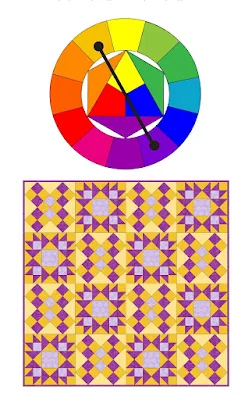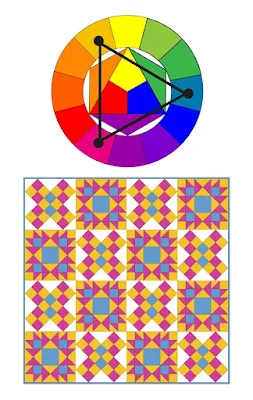
The fabrics you choose for your quilt can really make or break your project. I prefer not to stumble blinding when picking my colors but choosing from all the beautiful fabrics out there can be overwhelming. There are many wonderful pre-cuts that make most of the color decisions for you, but it's still good to know at least the basics of color theory.
To get started learning color theory, purchase the color wheel by Dritz that is specifically for quilters. The color wheel will help you choose colors a little more easily.

COLOR WHEEL COMBINATIONS
Below are the basic five color combinations you can get from the color wheel. I use one of these as a starting point when planning quilt colors. With practice, choosing fabrics will become easier starting with just these five combinations.
To get started learning color theory, purchase the color wheel by Dritz that is specifically for quilters. The color wheel will help you choose colors a little more easily.

COLOR WHEEL COMBINATIONS
Below are the basic five color combinations you can get from the color wheel. I use one of these as a starting point when planning quilt colors. With practice, choosing fabrics will become easier starting with just these five combinations.
Different shades and tints of the same color.

Colors that are across from each other on the color wheel.

ANALOGOUS
Colors that are beside each other on the color wheel.

SPLIT COMPLEMENTARY

SPLIT COMPLEMENTARY
The base color (e.g. red) and the colors that are adjacent to that color's complement (e.g. green).

TRIAD

TRIAD
Three colors that are evenly spaced on the color wheel.




Thanks for the reference pdf. This is an area where I am very challenged, and it will help me with my NY resolution to sew through the stash.
ReplyDeleteI hope you find it helpful. There are many good books and articles out there on colour theory, but I wanted a simple and quick reference for myself and decided to share it here.
Delete